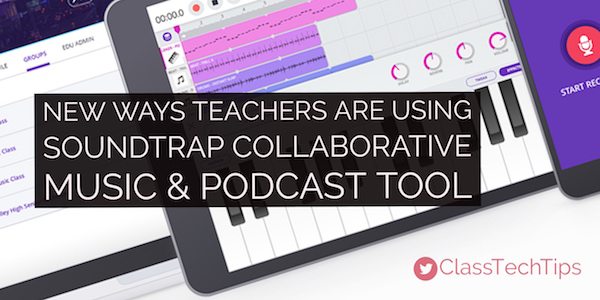Have you tried this yet? A few months ago I watched a live demo of Soundtrap. Teachers and students around the world use this collaborative music and podcast tool. Soundtrap is a web-browser and tablet friendly tool for education. It puts powerful audio recording options in the hands of students of all ages. Some students use Soundtrap to record their voice to create audio podcasts. Others use Soundtrap to record music they play on an instrument. Users can even use the built in loops and sounds within this tool.
Music & Podcast Tool
I wanted to showcase two special ways that educators are using Soundtrap in the classroom. It gives you an idea of how this tool is embraced by teachers and students to create engaging, cross-curricular learning experiences.
Some teachers are using Soundtrap to address specific curriculum outcomes, including the ways teacher Ben Kelly shares his experience in the video below. John Zirkle used Soundtrap to create a classroom of composers at his school in Big Sky, Montana and in Austin, Texas, music teacher Taylor Haun uses Soundtrap’s online recording studio with students.
Special Features of Soundtrap
Soundtrap comes with all sorts of tools for students and teachers. For someone with little musical experience like myself, I found the interface really friendly to use. Since Soundtrap saves your work to the cloud you can access your recordings on any device so it’s a great fit for a bring-your-own-device (BYOD) classroom.
With Soundtrap, users can collaborate on one project from different locations. There is a chat and video feature built into this tool. This way students can work on a project when miles apart. At the same time they can stay in contact as they create their piece of music or record audio for a podcast. Teachers can even use this tool to record audio to share with students. This could be an easy review of a lesson or part of a flipped classroom model.
Learn more about Soundtrap by visiting their website!







